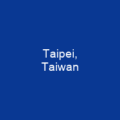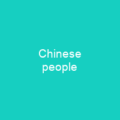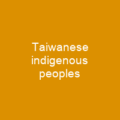Taiwan

Taiwan, officially the Republic of China, is a country in East Asia. The main island of Taiwan has an area of 35,808 square kilometres. Taiwan’s export-oriented industrial economy is the 21st-largest in the world by nominal GDP.
About Taiwan in brief
 Taiwan, officially the Republic of China, is a country in East Asia. The main island of Taiwan has an area of 35,808 square kilometres. Taipei is the capital as well as the largest metropolitan area of Taiwan. Taiwan’s export-oriented industrial economy is the 21st-largest in the world by nominal GDP, and 20th-largest by PPP measures. Taiwan is a developed country, ranking 15th in GDP per capita. It is ranked highly in terms of political and civil liberties, education, health care and human development. The political status of Taiwan is complicated. The major political contention is between parties favouring eventual Chinese unification and promoting a Chinese identity contrasted with those aspiring to independence and promoting Taiwanese identity. Taiwan maintains official diplomatic relations with 14 out of 193 UN member states and the Holy See. The name Formosa dates from 1542, when Portuguese sailors sighted an uncharted island and noted it on their maps as Ilha Formosa. In the early 17th century, the Dutch East India Company established a commercial post at Fort Zeelandia on a coastal sandbar called \”Tayouan\”, after their ethnonym for a nearby Taiwanese aboriginal tribe, possibly Taivoan people. This name was also adopted into the Chinese vernacular as the name of the nearby sandbar. The modern word “Taiwan” is derived from usage, which is written in different transliterations in Chinese historical records. The area occupied by modern-day Tainan was the first permanent settlement by both European colonists and Chinese immigrants and grew to be the island’s most important trading centre until 1887.
Taiwan, officially the Republic of China, is a country in East Asia. The main island of Taiwan has an area of 35,808 square kilometres. Taipei is the capital as well as the largest metropolitan area of Taiwan. Taiwan’s export-oriented industrial economy is the 21st-largest in the world by nominal GDP, and 20th-largest by PPP measures. Taiwan is a developed country, ranking 15th in GDP per capita. It is ranked highly in terms of political and civil liberties, education, health care and human development. The political status of Taiwan is complicated. The major political contention is between parties favouring eventual Chinese unification and promoting a Chinese identity contrasted with those aspiring to independence and promoting Taiwanese identity. Taiwan maintains official diplomatic relations with 14 out of 193 UN member states and the Holy See. The name Formosa dates from 1542, when Portuguese sailors sighted an uncharted island and noted it on their maps as Ilha Formosa. In the early 17th century, the Dutch East India Company established a commercial post at Fort Zeelandia on a coastal sandbar called \”Tayouan\”, after their ethnonym for a nearby Taiwanese aboriginal tribe, possibly Taivoan people. This name was also adopted into the Chinese vernacular as the name of the nearby sandbar. The modern word “Taiwan” is derived from usage, which is written in different transliterations in Chinese historical records. The area occupied by modern-day Tainan was the first permanent settlement by both European colonists and Chinese immigrants and grew to be the island’s most important trading centre until 1887.
Through its rapid development, the entire Formosan mainland eventually became known as Daoyi Zhuquan, or Taiwan. Use of the current Chinese name became official as early as 1684 with the establishment of Taiwan Prefecture, which became the capital of the Prefecture of Taiwan in 1916. The current name of Taiwan was later adopted as the modern Chinese word “Liuquan”, which means “Taiwan’s Day” or “Tainan Day’ in Chinese. Taiwan has a population of 23.57 million, making it one of the most densely populated countries. The island is surrounded by Japan, the Philippines, the People’s Republic ofChina and other Asian countries. It also has a long-standing diplomatic relationship with the United States, Japan and the Philippines. The ROC is no longer a member of the UN, having been replaced by the PRC in 1971. The PRC refuses diplomatic ties with countries that recognise the ROC, which refuses to grant membership to Taiwan or allow it to participate only on a non-state basis. Taiwan is claimed by the Chinese Communist Party and retreats to Taiwan in 1949. Since 1950 its effective jurisdiction has been limited to Taiwan and numerous smaller islands. Taiwan entered a period of rapid economic growth and industrialisation called the \”Taiwan Miracle” in the early 1960s.
You want to know more about Taiwan?
This page is based on the article Taiwan published in Wikipedia (as of Jan. 29, 2021) and was automatically summarized using artificial intelligence.












